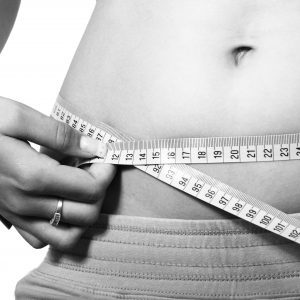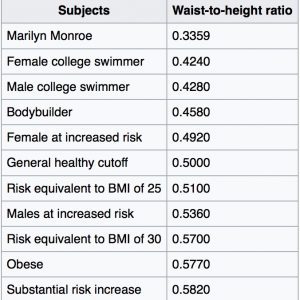The Body Mass Index (BMI) has long been used by doctors and health professionals as the main screening tool to determine your health risk of metabolic disease.
Even to this date, your physical check-up examination will tell you your BMI results.
Unfortunately, studies have shown it to be highly unreliable and that there are better screens out there for you to check if you are at risk.
Firstly, why is the BMI screen unreliable?
The formula for calculating your BMI is simply this:
BMI = (your mass in kg) / (your height in m)2
| Underweight | <18.5 |
| Normal weight | 18.5 – 24.9 |
| Overweight | 25 – 29.9 |
| Obese | >=30 |
As you can see, it only takes your mass and height into consideration so there will be a bias towards shorter, stockier people that have a high muscle mass to fat mass ratio. In fact, anyone that has a higher muscle mass ratio will be biased to having a higher BMI.
Since it only looks at weight and height, different races will have variations as different races have different body type builds.[1, 2]
It is also a poor screening tool for measuring children.
So if the BMI index is no longer considered a reliable screen for health, how can we tell if we’re heading towards the right direction without going into the hospital for a full doctor check-up?
By using the waist-to-height ratio (WHtR).
This easy to use formula is calculated very simply using just a tape measure:
WHtR = waist / height (using the same unit of measure).
Anything above 0.5 is at risk.
The WHtR has been compared to the BMI index and has been shown to be more effective at determining risk as cited in these studies [3, 4, 5, 6, 7, 8, 9].
If you’re concerned about your health state, grab a tape measure, and take 2 minutes to figure out your level of risk using this chart below:
If you’re within the healthy range – then great! If not, then hopefully this measurement will motivate you to get back on a healthier routine.
And you can always reach out to Olive Branch for more help on that!
- “BMI正常指標” [Normal BMI Index]. Ideal BMI Disease Prevention Project (in Chinese). Hospital Authority Health InfoWorld. Retrieved 2013-11-12.
- “肥満って、 どんな状態?” [What is obesity, what kind of state?]. Obesity Homepage (in Japanese). Ministry of Health, Labor and Welfare. Retrieved 2013-05-25.
- http://www.dailymail.co.uk/health/article-2746694/Forget-fancy-gadgets-health-apps-For-long-life-waistline-half-height.html
- https://health.clevelandclinic.org/2013/04/beyond-bmi-a-better-tool-to-measure-your-health/
- https://www.ncbi.nlm.nih.gov/pmc/articles/PMC3549404/
- https://www.ncbi.nlm.nih.gov/pubmed/16868890
- https://www.ncbi.nlm.nih.gov/pubmed/22106927
- https://www.ncbi.nlm.nih.gov/pubmed/25789140
- https://www.ncbi.nlm.nih.gov/pubmed/18986591

